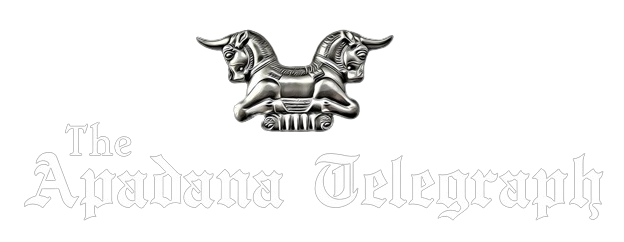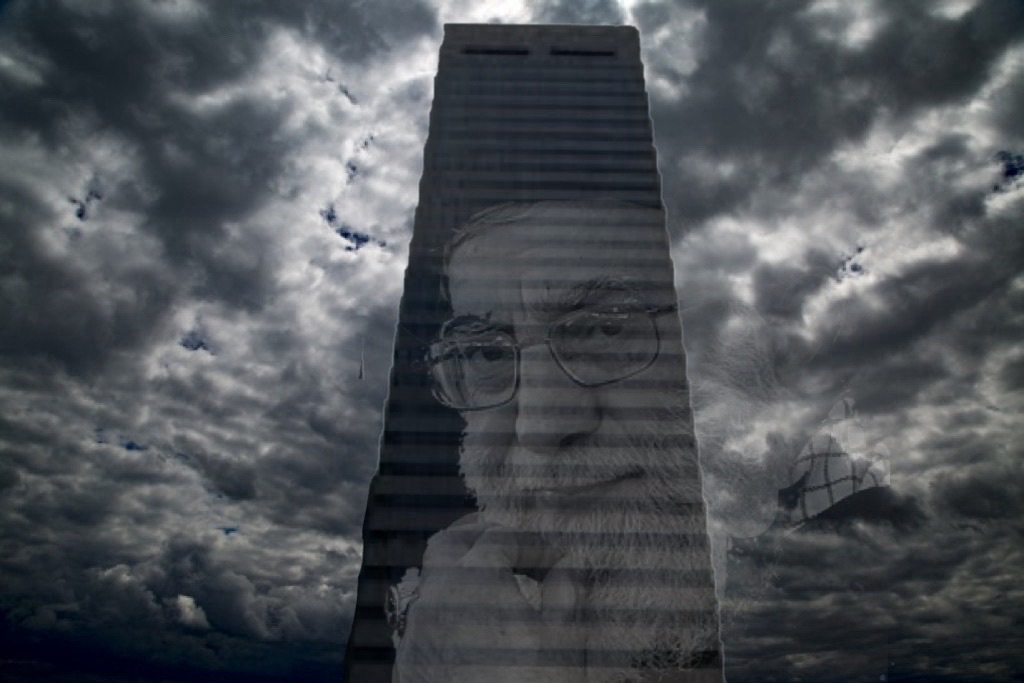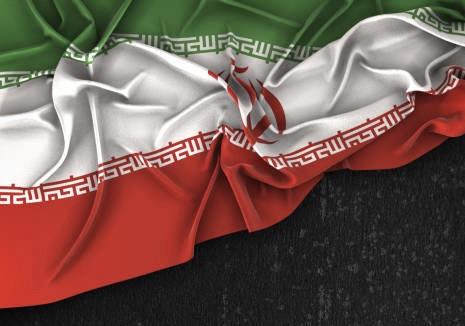Maëlie Kate Jalali
“The tree of Islam must continually be nourished by the blood of martyrs.” These are the chilling words expressed by RuhollahKhomeini, the founder of the Islamist regime that has held sway over Iran since 1979. Today, the use of martyrs, human shields, and sacrifices by the terrorist group Hamas reminds us, quite rightly, of the Khomeinist regime’s modus operandi.
The Islamic Republic regime and Palestinian leaders have together scripted a part of Iran’s recent history. Yasser Arafat, the leader of the Palestine Liberation Organization (PLO), was the first official representative to visit Iran after the Islamists seized power in 1979. It turns out he was actively involved during the lengthy process of this concerted invasion of Iran by Ruhollah Khomeini and his collaborators. Conveniently, Khomeini was inherently antisemitic to the core, a conspiracy propagandist, and he was quite vocal about it [1]. Arafat saw in that coming fateful event a strategic opportunity to upset the balance of power in the Middle East and to join a new radical Islamic movement in the fight against the state of Israel—“Today Iran, tomorrow Palestine”, he said. He allied himself with opponents of the Iranian monarchy composed of Marxist guerrilla organizations and Islamist groups. Driven by destructive ideologies, these opponents joined the training camps of the PLO in Yemen, Jordan, and Lebanon. Despite this collaboration, Arafat later turned against Khomeini during the Iran-Iraq war to avoid losing the support of the Arab world.
Nevertheless, Arafat remains one of the main accomplices in the conspiracy that led to the overthrow of the Pahlavi monarchy, a reliable U.S. ally, which ensured the stability of the Middle East. In 1977, U.S. President Jimmy Carter, during his official visit to Tehran, described Imperial Iran as an “island of stability in one of the more troubled areas of the world,” and Ronald Reagan called the Shah of Iran a “faithful ally”. However, the Iranian monarch represented an insurmountable obstacle to Arafat’s goals. In a 1976 interview on an American television channel, the Shah stated, despite sympathy for the Palestinian people, “our good Palestinian friends must know that there is only alimit to where they can go and bully the world…by terrorism and blackmailing.” The Shah was, at the time, trying to progressively normalize diplomatic relations between the Muslim world and Israel, notably within the framework of Israeli-Egyptian relations under the presidency of Anwar Sadat, thanks to an alliance concluded by Israel with Morocco and Iran. An outlook that, today, could very well be in line with the current Abraham Accords. In fact, Richard Nixon described the Shah as being “Israel’s only friend” in the region. Without a doubt, if the Pahlavi monarchy had remained in power in Iran, the situation would have been very different today.
The terrorist organization Hamas is part of the network of militias set up by the Islamic regime in Iran. Today, the tables have turned: it is members of Hamas who are trained and armed by the Islamic regime. Hamas pursues an operating mode reminiscent of organizations like the pro-Soviet communist party Toudeh, the People’s Fadayans, the Fadayan-e Eslam, or the People’s Mojahedin, which brought Khomeini to power. Let us recall the criminal arson attack on the Rex Cinema in Abadan in 1978, carried out by Islamist militants, with the intention of accusing the monarchy and SAVAK (Imperial Iran’s intelligence and security service), which deliberately killed over 450 people locked in the movie theatre. Or remember the murder of honorable politicians and military personnel from 1979; the unjustified massacre of civilians; the street parade of mutilated or burned bodies; the hostage-taking of the U.S. embassy in Tehran; endless, and mostly absurd [2], anti-Pahlavi propaganda and disinformation. For the Islamist regime as for Hamas, the sacrifice of human life is a justified means to achieve their mission, indicating that ideology prevails human life.
Islamic proselytism and expansionism are the watchwords of the regime in Iran. Its origin lies in Khomeini’s book, “The Governance of the Jurist (Velayat-e Faqih): Islamic Government (1970),” which is the ideological foundation of the Islamic Republic, and as we established above, includes antisemitic conspiracy passages. This text was then incorporated into the so-called Islamic Republic’s 1979 Constitution by entrusting an “ideological mission” to the armed forces: a “Jihad” (holy war) and the “struggle on the path of expanding the sovereignty of the law of God in the world (in accordance with to Quranic verse VIII, 60).” In the regime’s mindset, there is only one law, that of Allah, or their fundamentalist interpretation of it, which they are charged with propagating through a struggle that “excludes no force” and “strikes terror among the enemy.” The reality is thereby what it is: the Islamic Republic is not a normal political regime; Iran is its military base, the launching pad for a Shiite Islamic caliphate. According to its constitution, the regime exists to pursue the Islamic “revolution at home and abroad”, especially in the “development of international relations with other Islamic movements [and not States]; it strives to pave the way for the formation of a single universal community.” Howwill it do that? Like the Muslim Brotherhood, simply by financing and infiltrating Islamic centers, mosques, NGOs, and educational establishments, where it could potentially recruit followers, radicalize moderate Muslims, encourage a visible presence in the free world, all while taking advantage of political correctness (even denounced by the United Arab Emirates). Nevertheless, to ally with “Islamic movements,” there must be a common cause. The Islamic Republic feeds on death, the tragedy of war children, the blood of martyrs, and the misfortune of others. The Khomeinist regime glorifies and instrumentalizes the death of Palestinians in its jihadist propaganda, thereby gathering an army of supporters ready to inflame a crowd of rebels who naively believe that they are marching for peace and for the oppressed.
While Iran had once known Cyrus the Great, founder of the Persian Empire—a secular King and liberator of the Jewish people, who inspired Thomas Jefferson—the advent of the Islamic Republic regime, this dark page in Iran’s three-thousand-year history, has greatly contributed to the international breakthrough of Islamism. Its first victims are Muslims and Jews. However, Islamism is not alone. Communism and Islamism, or as the Shah of Iran called it in his book, “Response to History”, the “Red and Black alliance,” still exist, albeit in another form. Its expansion within the free world is all too evident in the past six months. It nests mainly in schools and universities, where young people spend most of their time, where indoctrination seeps into corridors, classrooms, and cafeterias. Because what we see on the streets of Brussels, Paris,New York, Berlin, London, Montreal, or Toronto is a “war of values,” as Crown Prince Reza Pahlavi calls it. In the current situation, the fight against radical Islamism becomes everyone’s battle. In 1979, we lost Iran under the strategic attack of the same expansionist organization that funds terrorist groups like Hamas. How far will this imported conflict go? It will largely depend on the decisions and policies of the free world.
[1] In his “Velayat-e Faqih” book, Khomeini used the word “Jew(s)-ish” 18 times. A few examples: “We see today that the Jews (may God curse them) have meddled with the text of the Quran and have made certain changes”; “We must protest and make people aware that the Jews and their foreign backers are opposed to the very foundations of Islam and wish to establish Jewish domination throughout the world”.
[2] Khomeini’s Islamo-Marxist collaborators used to claim that the SAVAK used a bear to sexually assault prisoners, while hanging from a rotating ceiling fan.
Maëlie Kate Jalali is a former serial entrepreneur and a jurist holding a civil law degree from University of Ottawa and a Juris Doctor graduate degree from Université de Montréal, where she is currently finishing a Master’s degree in Law. Her research is focused on Iran’s Pahlavi era, current regime and its constitution.






Leave a comment